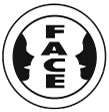How FACE Circles Work

How FACE Circles Work
The FACE Program offers a way for communities themselves to handle offending behavior, instead of leaving it to the traditional court system. A circle takes place when a crime has been committed against a person or their property. Those most directly affected take responsibility for what has happened and what should happen. A circle is comprised of a trained facilitator and co-facilitator, the offender, victim, investigating police officer, and support people for both the victim and offender.
In a typical circle the offender is first given the opportunity to explain his or her conduct and apologize. The victim then shares how the offender’s behavior has affected them, and the support people are given the chance to say their feelings as well, showing the offender the full ripple effect of what has been done.
In the second phase of the circle each participant is asked what needs to be done to hold the offender accountable, and to put the matter right. Once a consensus acceptable to all participants is reached the conditions are recorded in an agreement for the offender to complete within a set period of time. The purpose of the agreement is to give the victim a chance to have his or her needs met, and have the offender show that he or she is willing to make amends. This opportunity is not possible through the current court process.
By encouraging those most directly affected to take responsibility for what has happened and what should happen as a consequence, we believe that offending behavior can be transformed into a positive community resource. Offenders are not only members of their families but also of our community and as such each should recognize a responsibility to the other. The FACE Program maintains a goal that people will not only learn to resolve their immediate difficulties but will transfer the acquired knowledge to other situations, which can allow for greater community harmony. By working together to heal individual relationships, the entire community can eventually experience restoration.
Restorative Family Circles
FACE for Families provides an opportunity for families in crisis to use the restorative circle approach to deal with relationship issues within the family. By providing a safe environment with a trained facilitator the circle can explore relationships, issues, and conflict within the family and provide a means to resolve and heal fractured relationships with open honest communication.
The entire family is invited to the circle and they are encouraged to invite also supporters such as extended family members and close friends. A family circle looks much like a restorative justice circle and proceeds in the same way. The circle focuses on a recent incident or occasion chosen by the family with the assistance of the facilitator that displays the kind of conflict or offending behavior that is disrupting destroying the family relationships.
In the initial phase, those most responsible for the conflict take responsibility to explain their conduct and then the others each share how this situation has and is affecting them and the family as a whole. The second phase of the circle then invited each participant to suggest what is needed to make things right or what each can do or what the family can do as a whole to make things better.
The circle ultimately gives the family a quiet and safe setting to listen to each other and to begin to understand each other. The family gains or regains the experience of what it is like to work together as a family. The family, by working together on the immediate problem, begins to realize its own strength and becomes its own primary resource in working through future bumps along the road.
Restorative Community Circles
In the same way the principles and process of Family Circles can be adapted to any kind of conflict that might arise in the community. Some examples are disputes between neighbours, conflict in the workplace, or relationships within any club or congregation that have deteriorated.
The principles that make circles successful are:
- TRUTH TELLING. Each person speaks his own truth. This means taking the risk of saying what he or she really thinks and feels inside, not how he or she would like to be seen.
- ACCEPTANCE. Everyone must accept each other without judgment, doing their best to understand those that have a different way of looking at life, even those they might not agree with.
- RESPECT. Everyone should be treated as an equal who deserves respect. This means looking for and searching out the good in everyone participating in the circle.
These principles are the tools of not only repairing relationships, but of building new ones. Healthy relationships become the strength of any community.
